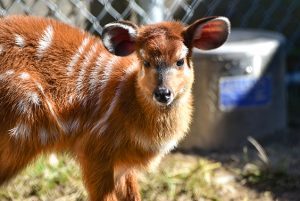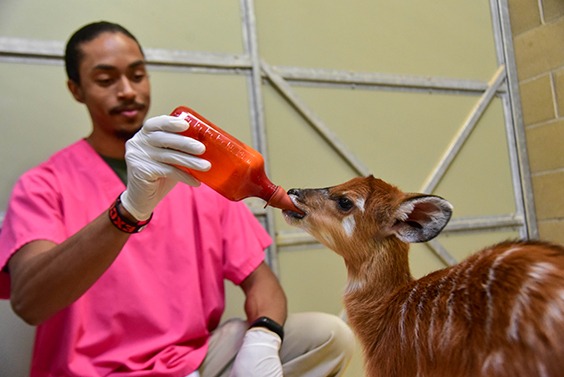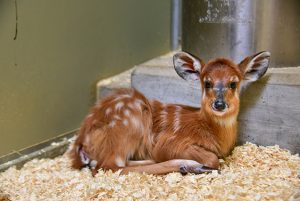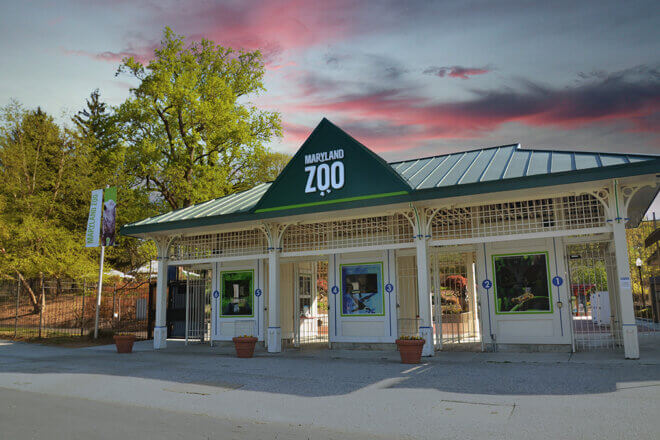The Maryland Zoo in Baltimore is welcoming two female sitatunga calves to its’ growing herd. The calves were born on Monday, October 9, and Monday, October 16, 2017. “Ruby” was born on October 9 to three-year-old Remy and sired by one-year-old Chopper, while “Peggy,” born on October 16, is the offspring of seven-year-old Lela and nine-year-old Hurley.

“Ruby is a healthy 14-pound calf,” stated Erin Cantwell, mammal collection and conservation manager at the Zoo. “Remy has been very attentive to her calf. The two are sharing space with others in the herd and have just begun exploring the outdoor behind-the-scenes area together with our month-old male calf Marcus and his mother Mousse.”
“Peggy, on the other hand, has had a bit of a rough start,” continued Cantwell. “Lela had a difficult delivery and we decided it was best for both dam and calf that we hand-raise Peggy in close proximity to the herd. Animal care staff are bottle feeding her a specialized milk formula six times a day. She has been steadily gaining weight and we are keeping a very close eye on her to ensure she thrives.”

The sitatunga (Tragelaphus spekii) is a species of antelope native to Central Africa. They live in semi-aquatic swamps, marshes and flood plains. Outside of protected areas, sitatunga are vulnerable to over-hunting and habitat loss, as people drain and develop swamp land. Currently, sitatunga are not classified as threatened or endangered.
The Maryland Zoo’s sitatunga herd is made up of 12 animals, including the new calves, and can be found in two exhibit spaces along the boardwalk in the African Journey section of the Zoo. “We hope that Zoo visitors will able to spot Remy and Ruby in the sitatunga yard next to the tortoises beginning this week, weather permitting. Because of her specialized care, Peggy will need additional time behind-the-scenes to ensure her continued health and integration into the herd.”
The calves’ births were the result of a recommendation from the Sitatunga Species Survival Plan (SSP) coordinated by the Association of Zoos and Aquariums (AZA). SSPs provide breeding recommendations to maximize genetic diversity, with the goal of ensuring health of the individual animal, as well as the long-term survival of the species population to help save animals from extinction.






Share this article